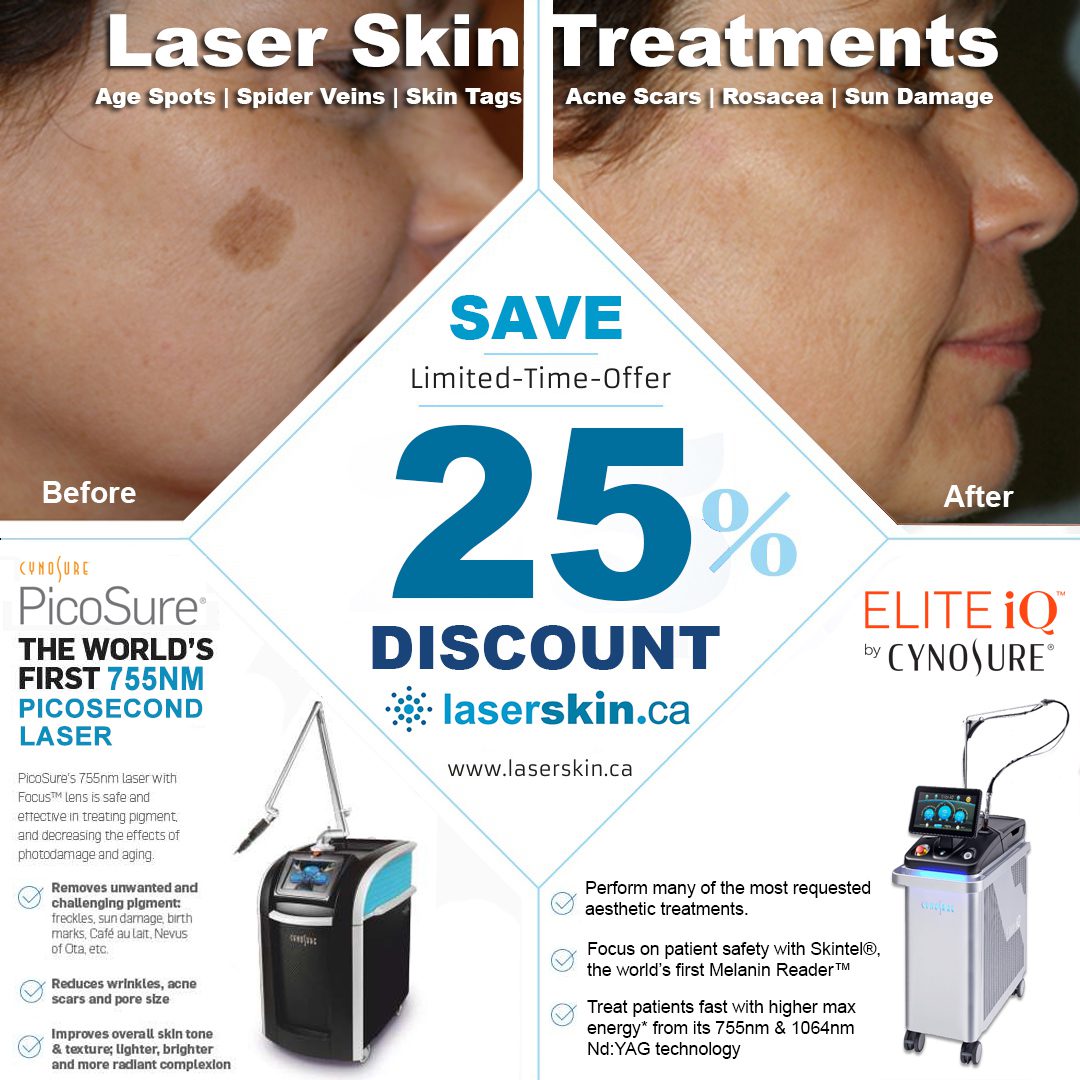
LASER ROSACEA TREATMENT TORONTO
Rosacea is a common skin condition that causes the blood vessels in your face to become visible and your face to appear red or flushed. Patches of small, pus-filled bumps are another common symptom. At Laser Skin Clinic we specialize in the treatment of Rosacea. The American Academy of Dermatologists states that lasers used to treat visible blood vessels have excellent results. Patients see a 50 to 75 percent reduction in their symptoms after one to three treatments that can last up to five years.
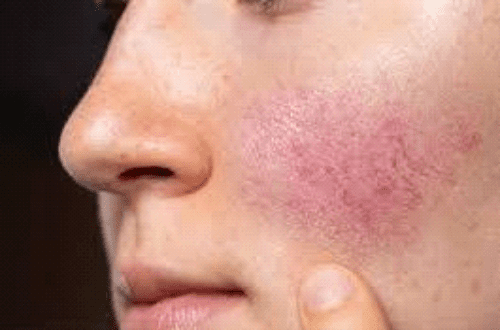
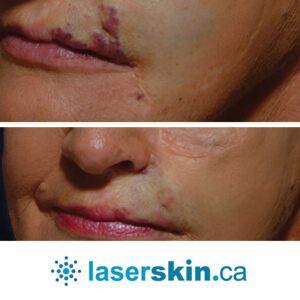
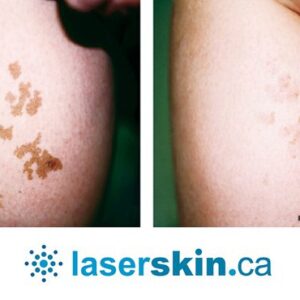
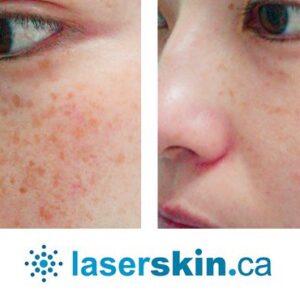
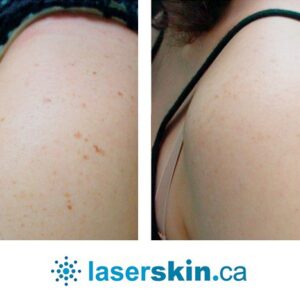
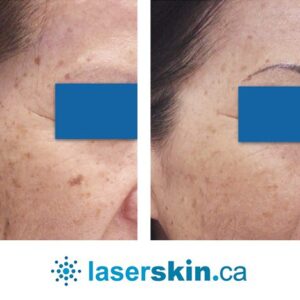
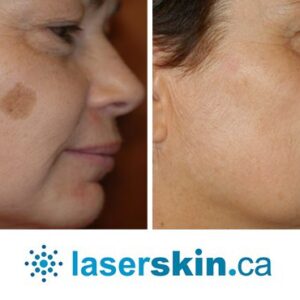
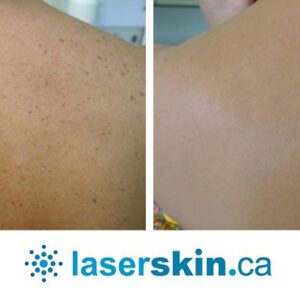
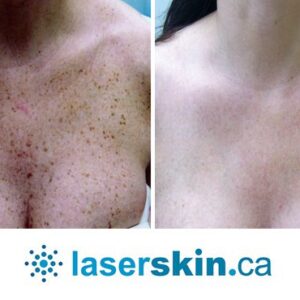
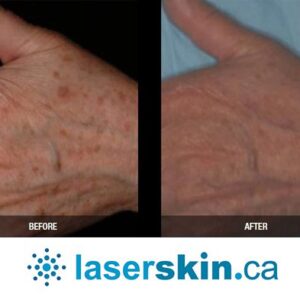
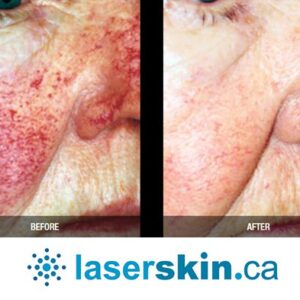

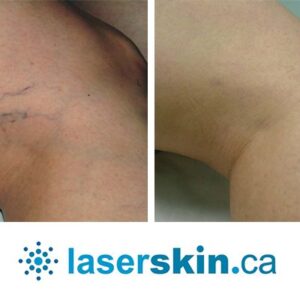
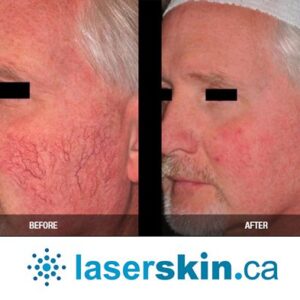
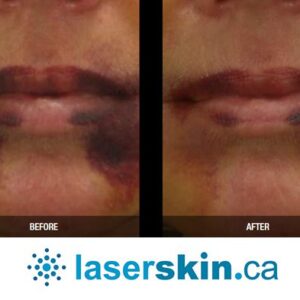
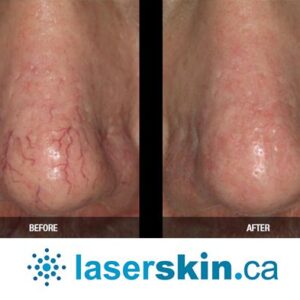
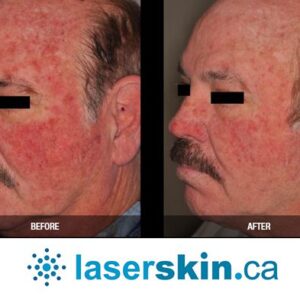
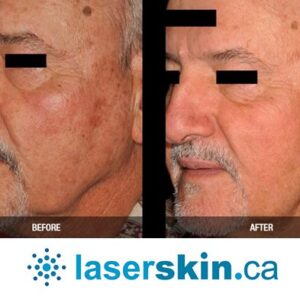
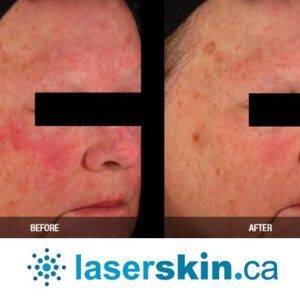
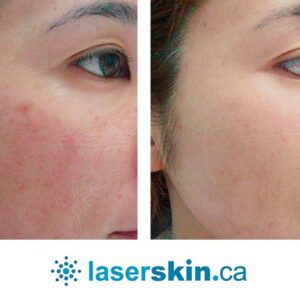
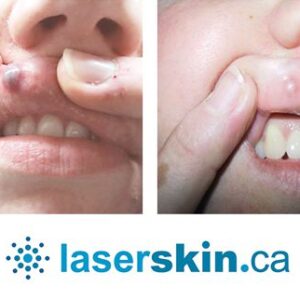
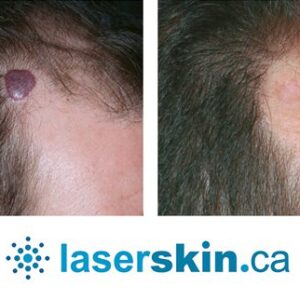
Rosacea and Rosacea Treatment
Rosacea is a skin disorder that affects the face and is characterized by chronic inflammation. Rosacea is often misdiagnosed as acne, eczema, or an allergic skin reaction.
Rosacea is characterized by face flushing, inflamed skin, and pimples. Other signs and symptoms include flushing easily and vision issues.
Rosacea is a widespread skin condition that affects 1–20 percent of the population. However, because persons with rosacea are frequently misdiagnosed, the true incidence may be much higher.
Although there is no cure for rosacea, the symptoms can be managed with lotions and drugs.
Dairy products, spicy foods, coffee, and alcohol, among other foods and beverages, might aggravate the symptoms. Sun exposure can also exacerbate the symptoms.
Rosacea tends to be more common in females than males, and it usually develops after the age of 30.
TYPES OF ROSACEA
There are four main types of rosacea, these are:
- Erythematotelangiectatic rosacea: The symptoms may include skin discoloration, visible blood vessels, and flushing.
- Papulopustular rosacea: This type of Rosacea includes symptoms such as swelling, flushing, and breakouts that resemble acne.
- Phymatous rosacea: Symptoms include thickened, bumpy skin.
- Ocular rosacea: Symptoms include eye redness and irritation and swollen eyelids.
Long-term use of corticosteroids, particularly when used to treat dermatitis and vitiligo, can also lead to another type of rosacea condition called steroid rosacea.
Symptoms Of Rosacea
- Persistent skin discoloration: This may seem like a persistent blush or sunburn. It occurs when hundreds of small blood vessels near the skin’s surface expand.
- Skin thickening: Excess skin tissue can cause the skin to thicken. This mainly affects the nose and can lead to rhinophyma, which is more common in men than in women.
- Flushing: This condition occurs when the skin on the face darkens for a short period of time. It might extend from the face to the neck and chest, making the skin feel hot and uncomfortable.
- facial swelling, due to excess fluid and proteins leaking out of the blood vessels
- burning or stinging sensations in the skin
- dry or rough facial skin
Causes of Rosacea
Experts are not exactly sure what causes rosacea. However, many believe that the following factors may contribute to this issue:
- Abnormalities in the blood vessels: Facial flushing and spider veins are thought to be caused by irregularities in the blood arteries of the face, according to skin specialists. They don’t know what causes inflammation in the blood vessels, though.
- A skin mite called Demodex folliculorum: This mite lives on the surface of the skin and usually does not cause any problems. People with rosacea, on the other hand, are more likely to have these mites than others. It’s unknown if the mites create rosacea or the rosacea causes the mites to multiply.
- Bacteria called Helicobacter pylori: These gut bacteria cause blood vessels to widen by stimulating the creation of bradykinin, a tiny polypeptide. This bacterium, according to experts, may play a role in the development of rosacea.
- Family History: Many people who have rosacea have a close relative who also has the condition. This implies that an inherited or genetic component may exist.
Rosacea Treatment
The following sections look at some possible rosacea treatment options:
- Skin creams: Skin creams can aid in the reduction of inflammation and skin discoloration. Doctors may advise using them once or twice daily. Topical antibiotics, tretinoin, benzoyl peroxide, and azelaic acid are a few examples. A doctor may also prescribe camouflage creams to conceal skin blemishes.
- Antibiotics: Anti-inflammatory effects of antibiotics can be obtained orally. They produce quicker results than topical ones. Tetracycline, minocycline, and erythromycin are a few examples. Tetracyclines are antibiotics that can aid in the treatment of eye symptoms. Doxycycline alleviates dryness, itching, blurred vision, and light sensitivity in people with ocular rosacea.
- Isotretinoin: Isotretinoin (Accutane) is an oral medication used to treat severe rosacea (if other treatments have not worked). This is a potent medication that prevents the skin from producing oil. The consequences can be severe. This medication is ineffective in treating erythematotelangiectatic rosacea.
- Laser treatment: Dermatologists can use laser treatment to help reduce telangiectasia, or visible blood vessels. They are shrunk using intense pulsed light in this treatment. Although the procedure may be painful, most people will not require an anesthetic. Laser treatment can occasionally result in bruising, skin crusting, swelling, tenderness, and, in rare cases, infection. A person can consult a cosmetic surgeon if they want to remove thickened skin caused by rosacea. Excess skin can be removed with laser treatment or scalpel surgery. Thickened tissue can also be shrunk using a carbon dioxide laser.
Q&A for Rosacea Treatment
How is rosacea diagnosed and treated?
Rosacea is a long-term skin condition that results in redness, flushing, and sometimes acne on the face. Additionally, it can cause searing or stinging sensations and skin thickening. Although the cause of rosacea is unknown, genetics, sun damage, and abnormalities in the face’s blood vessels are believed to play a role.
Rosacea can be treated with topical lotions, oral antibiotics, laser therapy, and lifestyle modifications such as avoiding alcohol and spicy foods. Topical creams, such as metronidazole and azelaic acid, can reduce redness and inflammation, whereas oral antibiotics, such as doxycycline and tetracycline, can control the bacteria that cause acne-like pimples.
Laser therapy can also be used to reduce rosacea-related erythema and inflammation. This treatment targets blood vessels in the afflicted area and causes them to shrink, improving the skin’s appearance.
Can over-the-counter rosacea treatments be effective?
Although over-the-counter remedies can temporarily relieve some rosacea symptoms, they are generally ineffective at treating the condition. In addition, some over-the-counter products may contain skin-irritating components that exacerbate rosacea symptoms.
A dermatologist should be consulted for a personalized treatment plan. A dermatologist can prescribe rosacea-specific medications and recommend skin care products.
Is laser therapy an effective rosacea treatment?
Yes, laser therapy is effective in reducing rosacea-related redness and inflammation. Laser therapy targets blood vessels in the afflicted area and causes them to constrict, thereby improving the skin’s appearance.
Typically, laser therapy is administered in a series of treatments separated by several weeks. As a result, some patients may experience improvement after a single treatment, but most require multiple treatments to achieve the desired outcome.
Are there any natural remedies that can alleviate the symptoms of rosacea?
Although there is no known cure for rosacea, some natural remedies may help alleviate its symptoms. These remedies include green tea, aloe vera, chamomile, and licorice extract. In addition, these remedies contain anti-inflammatory properties that may reduce inflammation and irritation.
It is essential to observe that natural remedies should not be substituted for medical care. If you are experiencing rosacea symptoms, consult a dermatologist for a precise diagnosis and treatment plan.
How long does it take to see rosacea treatment results?
The time it takes to see rosacea treatment results depends on the severity of the condition and the treatment administered. Some patients may experience improvement within a few weeks, whereas others may need months of treatment.
It is essential to adhere to your dermatologist’s treatment plan and be patient with the results. Consistency with treatment and avoidance of stimuli can also assist in accelerating the process of achieving results.
Can rosacea be treated?
Although there is no cure for rosacea, it can be managed effectively with the proper treatment and lifestyle modifications. Working closely with a dermatologist to develop a customized treatment plan is essential.
Rosacea may be treated with topical creams, oral antibiotics, laser therapy, and lifestyle modifications, such as avoiding triggers and donning sunscreen. However, even if rosacea symptoms improve with treatment over time, they may return if triggers are not avoided.
What stimuli should someone with rosacea avoid?
Alcohol, spicy foods, hot beverages, sunlight, tension, and certain skincare products can exacerbate rosacea symptoms. Alcohol can cause blood vessels to dilate, worsening rosacea-related erythema and blushing. Additionally, spicy foods can cause skin flushing and inflammation. Coffee and tea can cause dilation of the blood vessels in the face, exacerbating rosacea symptoms.
Sunlight can also induce rosacea, so using sunscreen and avoiding direct sunlight whenever possible is essential. Stress can cause the release of hormones that can exacerbate rosacea symptoms by causing inflammation and aggravating the condition. Some hygiene products, such as those with alcohol or fragrances, can irritate the skin and exacerbate rosacea symptoms.
Managing rosacea symptoms and preventing flare-ups can be aided by avoiding triggers and maintaining a consistent hygiene routine. Keeping a journal of potential triggers and monitoring your signs can also help you identify and avoid triggers.
